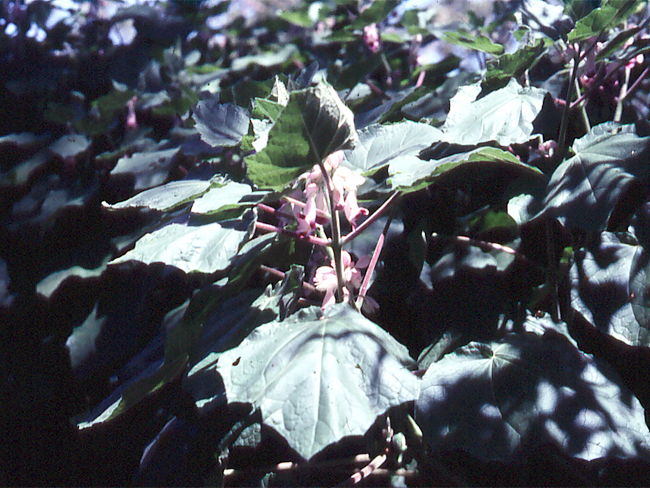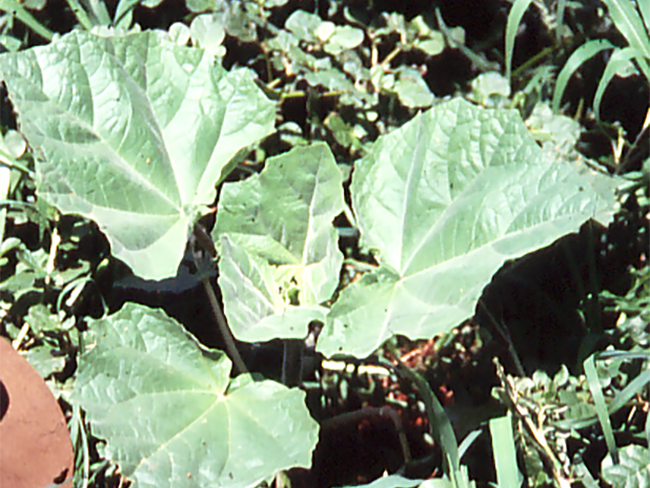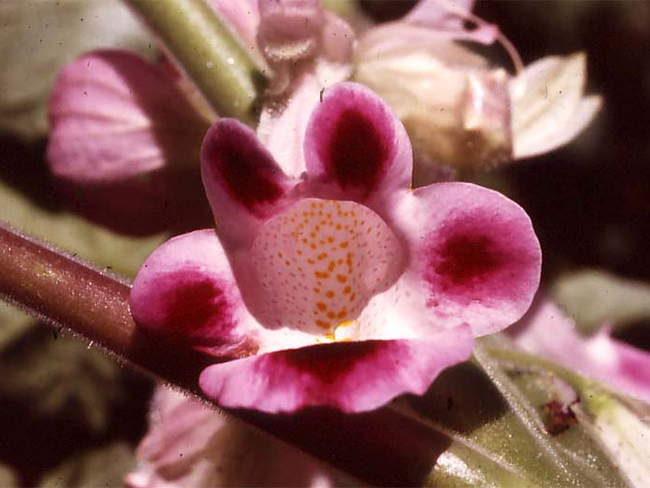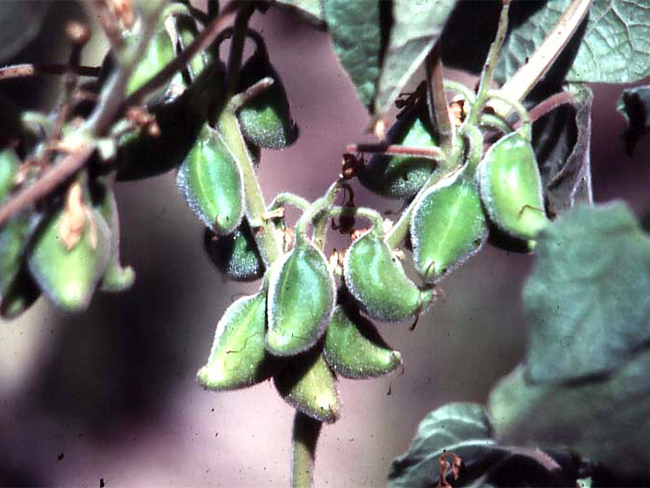Devil's claw
Scientific name: Martynia annua
Declaration status: Class A
Devil's claw is native to Central and South America.
It was first found in the Northern Territory in the Pine Creek area during the early gold mining days.
It was found in Katherine after World War II and has spread through the Katherine, Pine Creek and Victoria River districts.
Impact
Devil’s claw is particularly invasive on disturbed ground and is often found in high-use areas such as around stockyards, buildings and along roadsides.
Devil’s claw can have all of the following impacts:
- the spined seed capsules can injure and cause discomfort to livestock and native animals
- invades and replaces native bush lands including in Gregory National Park.
Identification
You should use this as a guide. There may be other plants or weeds that look similar.
- up to 2m tall
- pumpkin shaped leaves, 12.5cm wide and sticky exudate can be felt when handled
- large white to pink bell shaped flowers, approximately 5cm long
- throat of the flower is red with yellow spots
- immature seed capsule is covered with a fleshy green skin, has a curved beak that splits when mature, revealing the “claws”
- mature seed capsule is 3 to 4cm long, grey to black colour and very hard. Each capsule contains two dark seeds which remain inside until germination.
If you are unsure, contact the Weed Management Branch.
Similar looking plants
There are four introduced weed species in Australia that all go by the name of devil’s claw and all closely resemble one another. Of the four, only Martynia annua is present in the Northern Territory.
Control
This species is difficult to eradicate due to the ability of the seeds to remain viable for long periods of time.
Most seed will germinate in the first two years after forming; however some seeds will remain preserved in the old capsules for five years or more.
In order to eradicate this species a control program of five to 10 years is required.
Chemical control
The best time to treat devil’s claw is from December to March. Below is a list of treatment methods that can be used.
| Chemical and concentration | Rate | Situation, method and notes |
|---|---|---|
|
2, 4-D amine 625 g/L Various trade names | 320mL / 100L |
Seedling or adult (individuals or infestation): Foliar spray - apply when actively growing |
|
Glyphosate 360 g/L Various trade names and formulations | 10mL / 1L |
Seedling or adult (individuals or infestation): Foliar spray - apply when actively growing |
|
MCPA 340 g/L + Dicamba 80 g/L Various trade names | 320mL / 100L |
Seedling or adult (individuals or infestation): Foliar spray - apply when actively growing |
Non-chemical control
Hand pulling and grubbing
Weeds, including their roots, are physically pulled out of the ground by hand or using hand tools. This is an effective method of control for individual weeds and recent outbreaks that haven’t released seeds yet, but it requires a lot of labour.
Slashing
A brush-cutter, slasher or mower are used to cut weeds off above the ground level. This can be effective in suppressing flower and seed development.
Spread
Devil’s claw seedpods are adapted to hook into animal’s fur for distribution.
They also hook into clothing, machinery and vehicles.
The sharp spines can cause injury to livestock and have been known to injure mouths and hooves, causing malnourishment and lameness.
Most seeds will germinate within the first two years after forming, but some will stay preserved in the capsules for five years or more.
Spread prevention
You can prevent the spread of devil’s claw by doing all of the following:
- map infestations to help develop a management plan
- control minor infestations, isolated outbreaks or seedlings first
- prioritise control in paddocks and other locations that facilitate spread
- designate wash down areas and actively work to prevent contamination of clean areas
- monitor areas that you have treated and watch for re-infestations.
Give feedback about this page.
Share this page:
URL copied!




